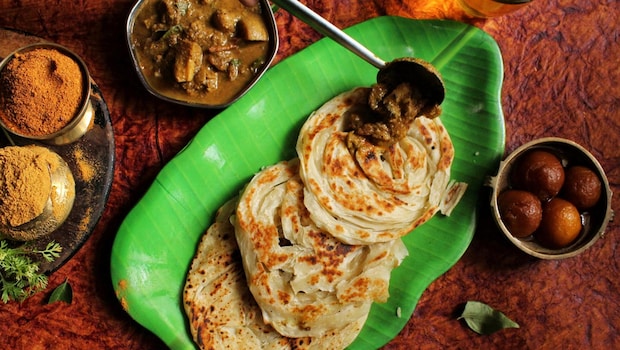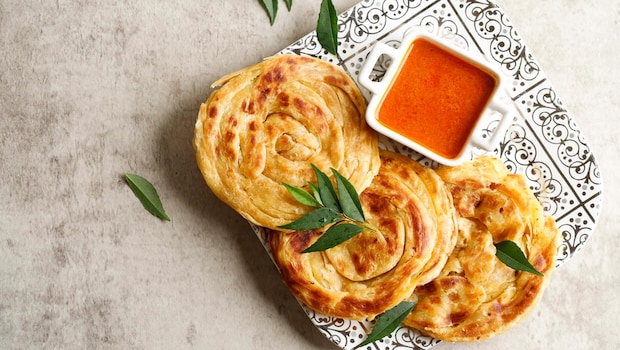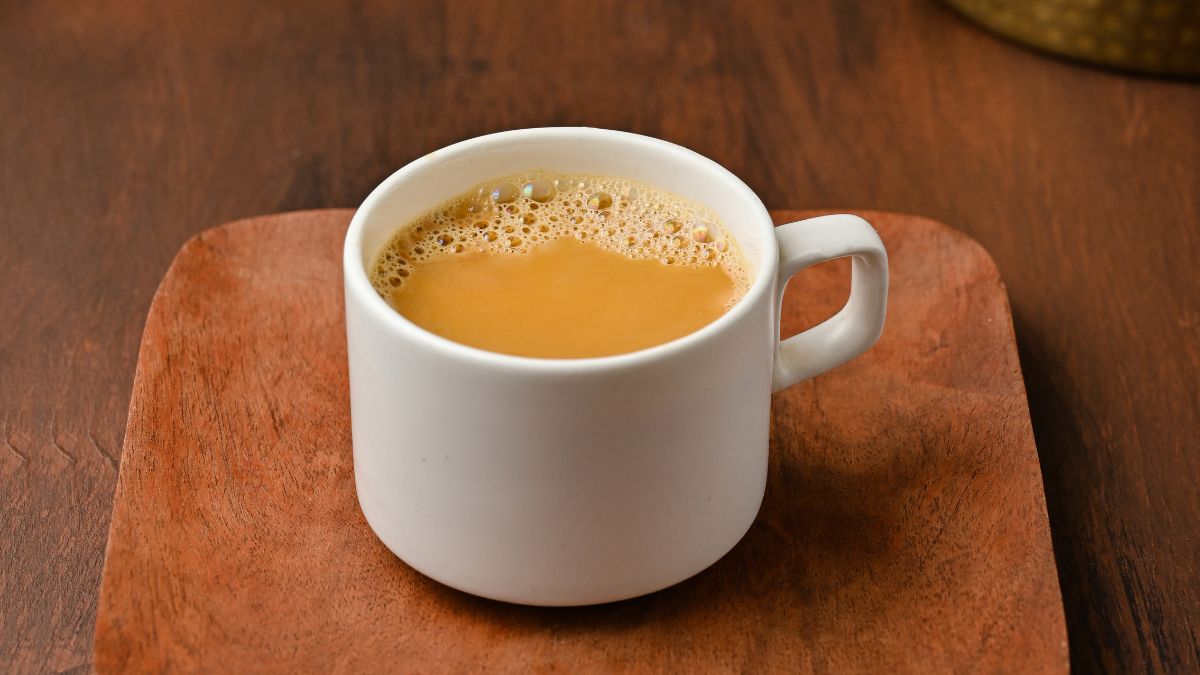When it comes to South Indian breads, appam and parotta are two of the most popular choices. Both are delicious, versatile and perfect for breakfast or dinner. The best part? You can easily make both at home and even order them via an online food delivery platform if you're short on time. But if you're watching your calories or trying to lose weight, it's natural to wonder which one is the healthier pick. While parotta is soft and flaky, appam is airy and fermented, making it easier on the stomach. Let's break down their health benefits and see which South Indian bread fits better into a weight-loss plan. But first, let's see exactly what an appam and a parotta are.
Also Read: How To Make South Indian-Style Egg Appam The Right Way

Photo Credit: iStock
What Is An Appam?
Appam is a soft, thin, and lacy South Indian pancake made from fermented rice batter and coconut milk. It is light, airy and slightly sweet, making it a popular choice for breakfast or dinner. Here is an appam recipe you would want to try.
What Is A Parotta?
Parotta is a layered, flaky South Indian flatbread made from refined wheat flour and oil or ghee. It is rich, soft and indulgent, often enjoyed with curries or gravies. With this easy recipe, you can make parotta easily at home.
Here Are 5 Key Differences Between Appam And Parotta:
1. Ingredients And Batter
Appam is made from a fermented rice batter mixed with coconut milk, which gives it a light texture. Parotta, on the other hand, is made from refined wheat flour and layered with oil or ghee, making it denser and richer.
2. Texture And Appearance
Appam is soft and slightly spongy with a thin centre and crisp edges. Parotta is flaky, layered, and soft, often thicker, and has a more indulgent texture due to the layers of dough and fat. The contrasting textures make each bread unique and suitable for different types of meals.

Photo Credit: iStock
3. Calorie Content
Appam is lighter and lower in calories because it uses rice and minimal oil. Parotta is calorie-dense, higher in fat, and more filling, which makes it less suitable for weight-loss diets. Its richness can make it easy to overeat if not portion-controlled.
4. Digestibility
The fermentation in appam makes it easier to digest and gentler on the stomach, which can prevent bloating and discomfort. Parotta, being rich in refined flour and oil, can be heavier and take longer to digest, making it less ideal for a light meal.
5. Meal Pairings And Usage
Appam is often paired with light curries, vegetable stews or coconut milk-based dishes. Parotta is typically enjoyed with heavier gravies, meat curries or spicy sauces, making it a more indulgent option.
Also Read: Top 7 Restaurants To Tear Into The Perfect Kerala Parotta In Delhi

Photo Credit: iStock
Which South Indian Bread Is The Lighter Choice For Weight Loss?
If you're aiming for weight loss, appam clearly takes the lead. Its light texture, lower calorie count and digestive benefits make it a better fit for a calorie-conscious diet. Parotta, while delicious, is richer, heavier, and more indulgent, making it a treat rather than a regular weight-loss option. That said, enjoying parotta occasionally in moderation won't derail your diet, but if you need a daily bread choice that supports your weight-loss journey, appam is the smarter pick.
Whether you make it at home or order it online, appam is the lighter, more weight-loss-friendly choice, while parotta remains a delicious indulgence best enjoyed in moderation.
Disclosure: This article may contain links to third-party websites or resources. However, this does not affect the integrity of the content, and all recommendations and views are based on our independent research and judgment.










